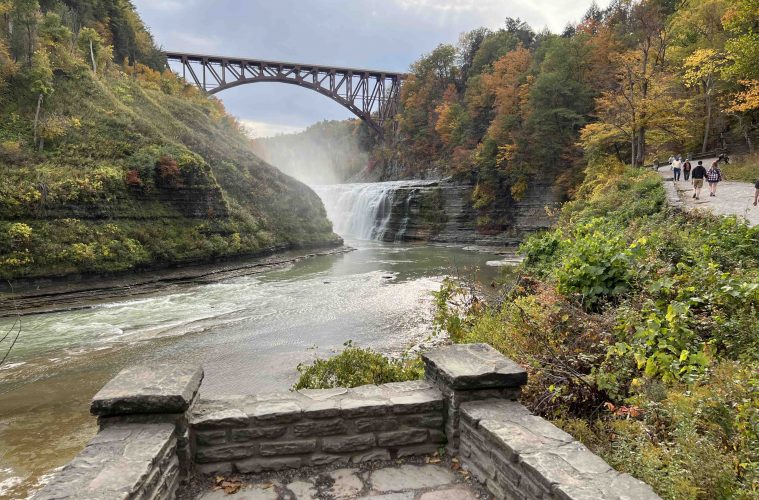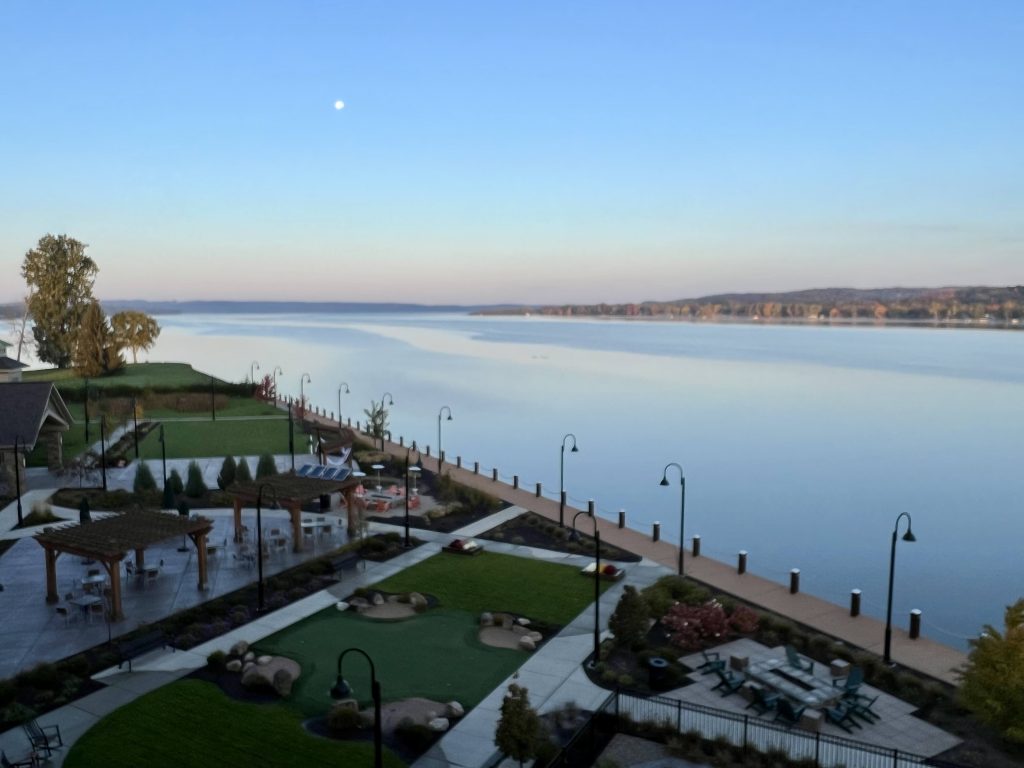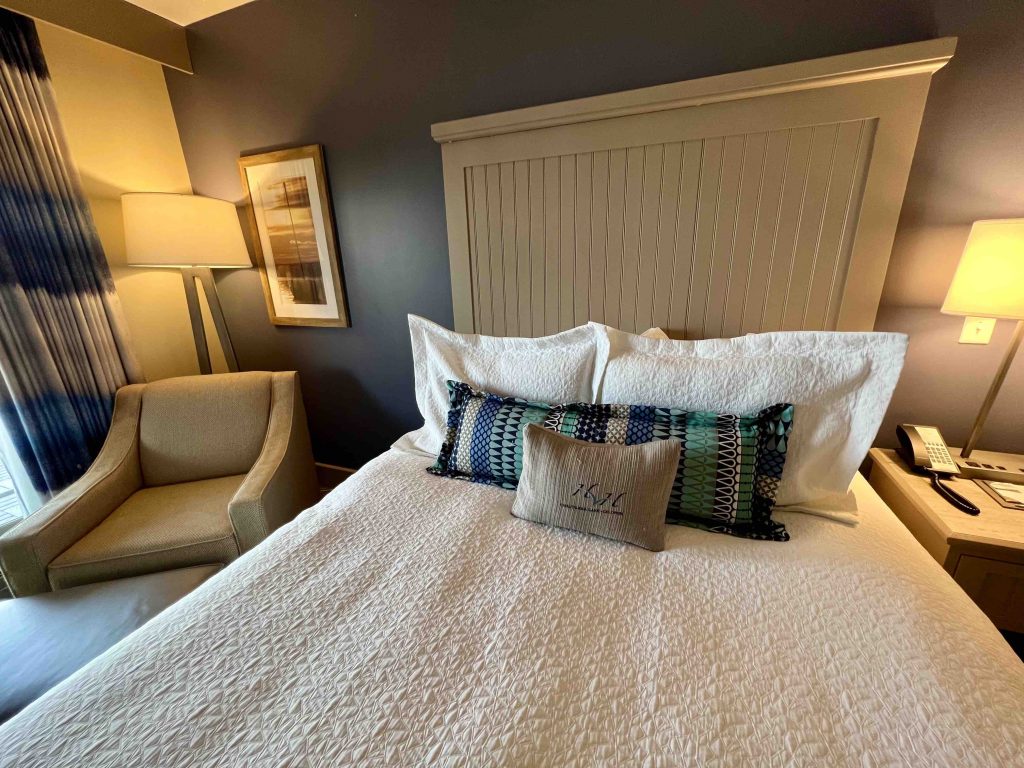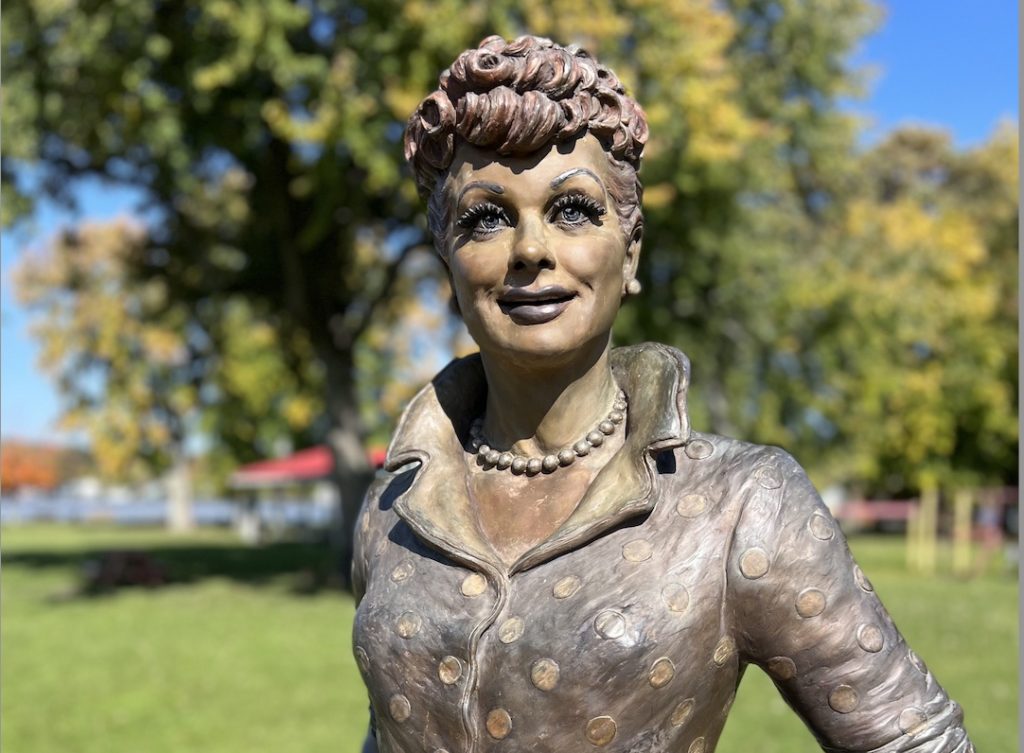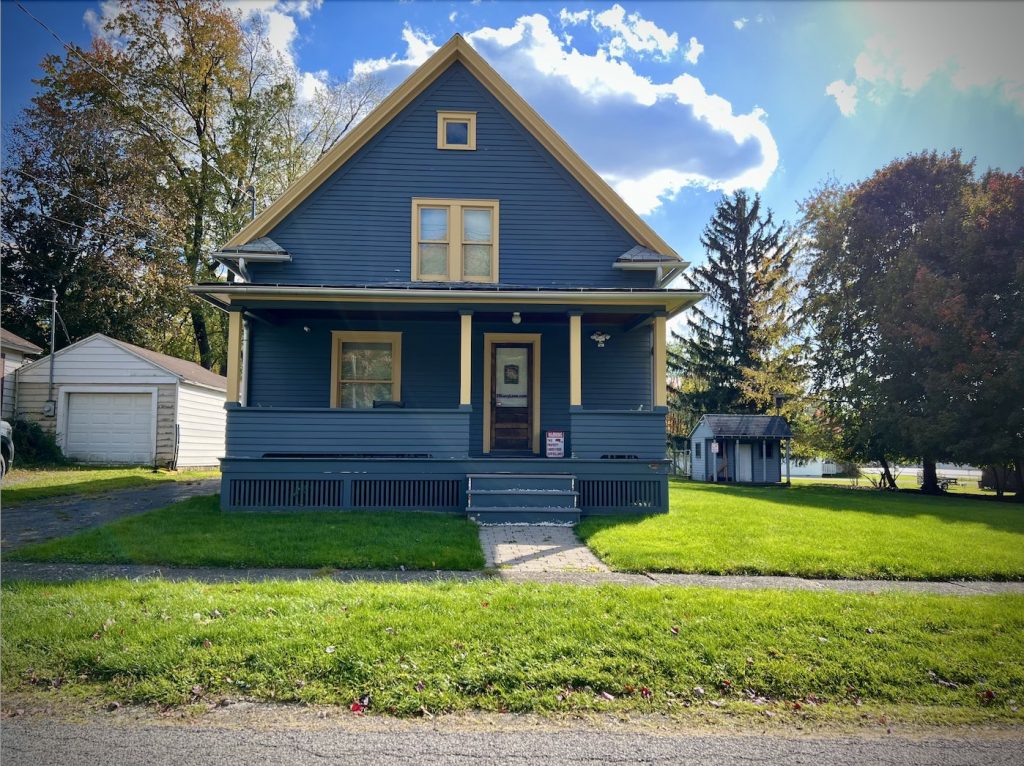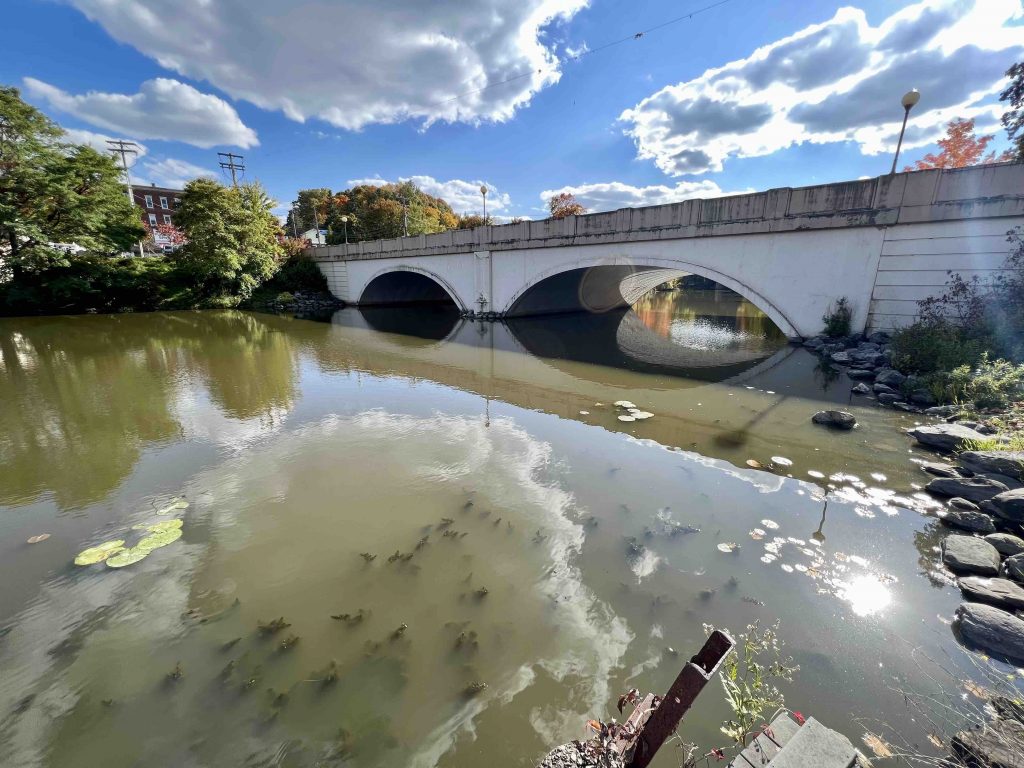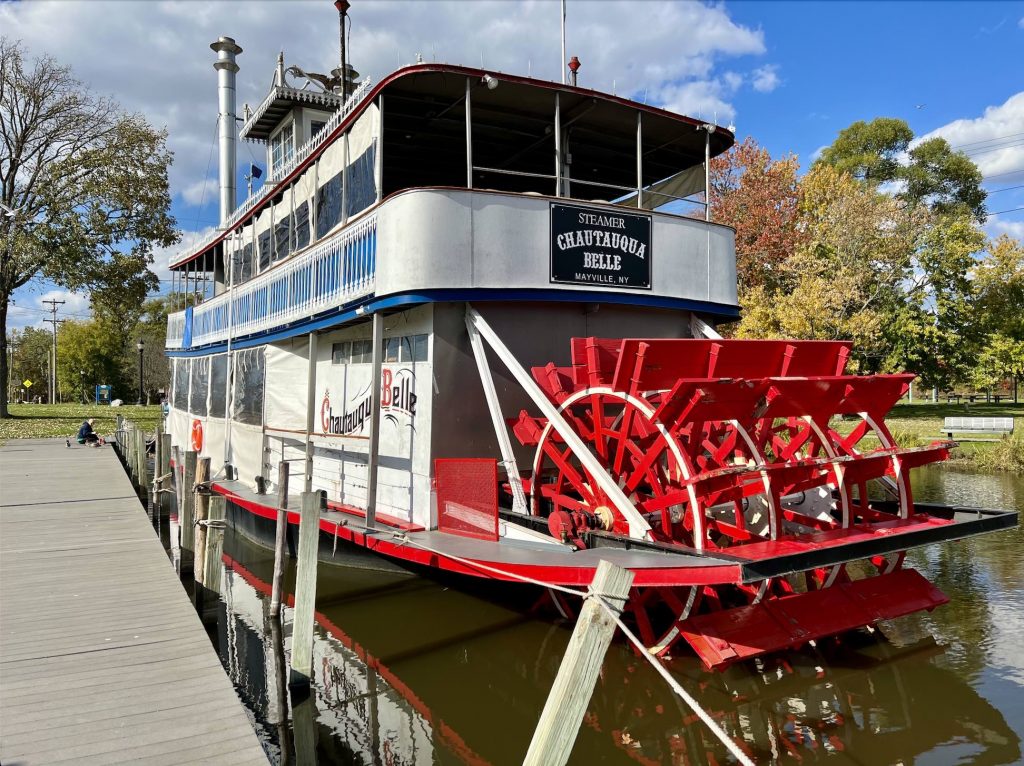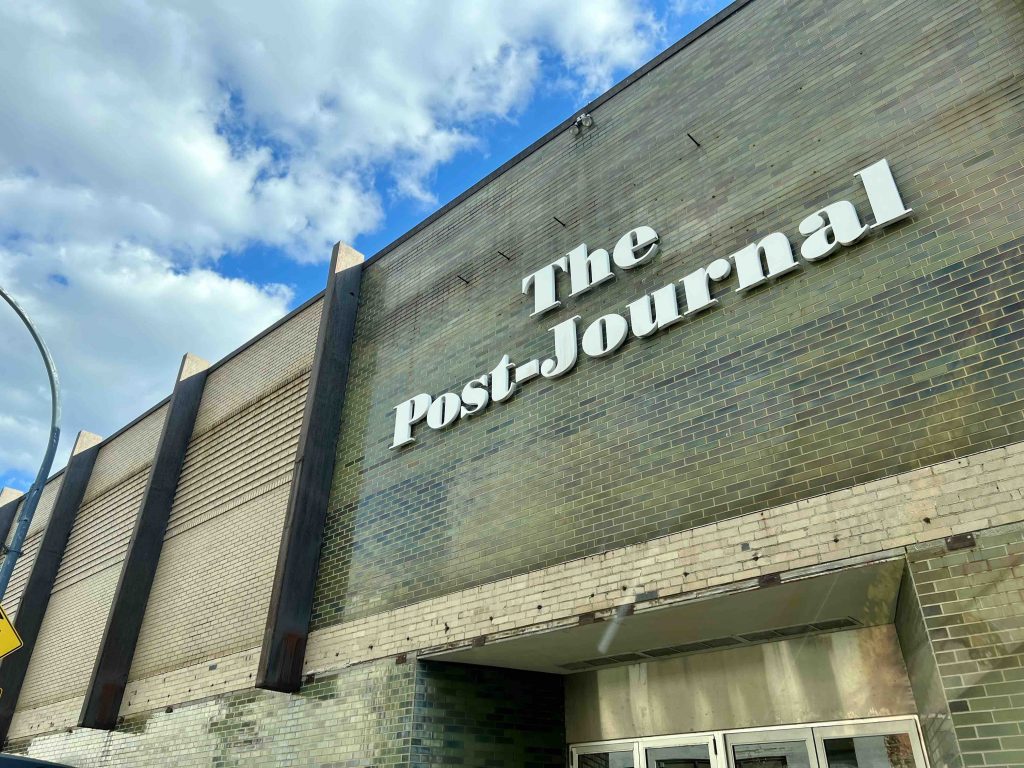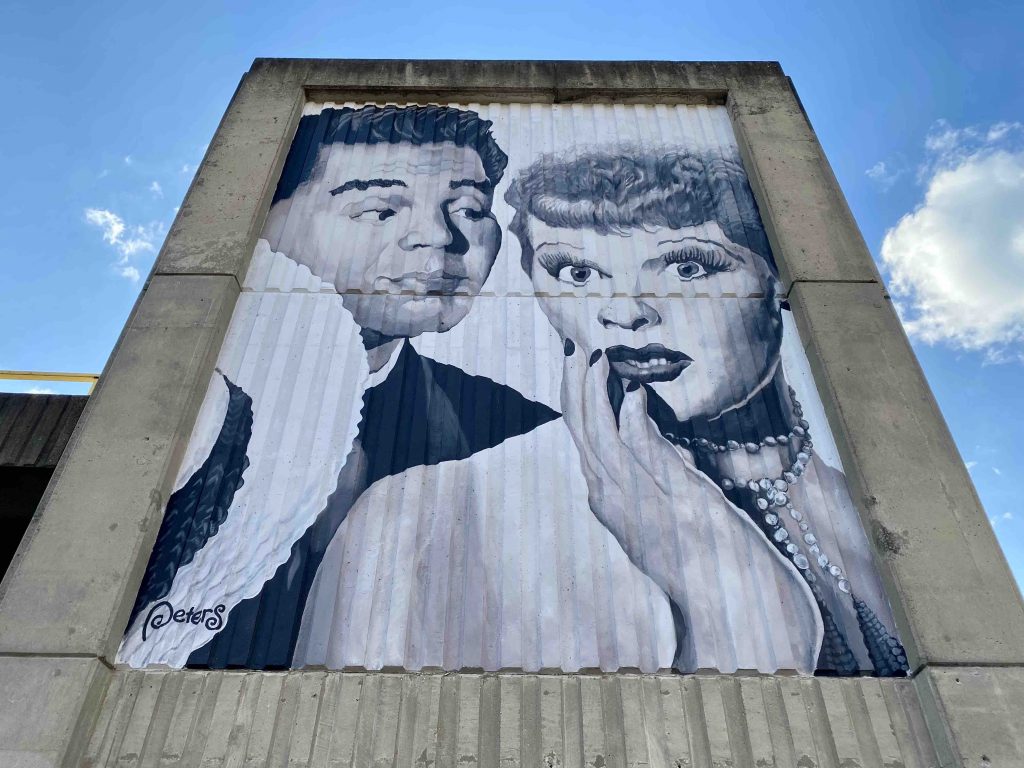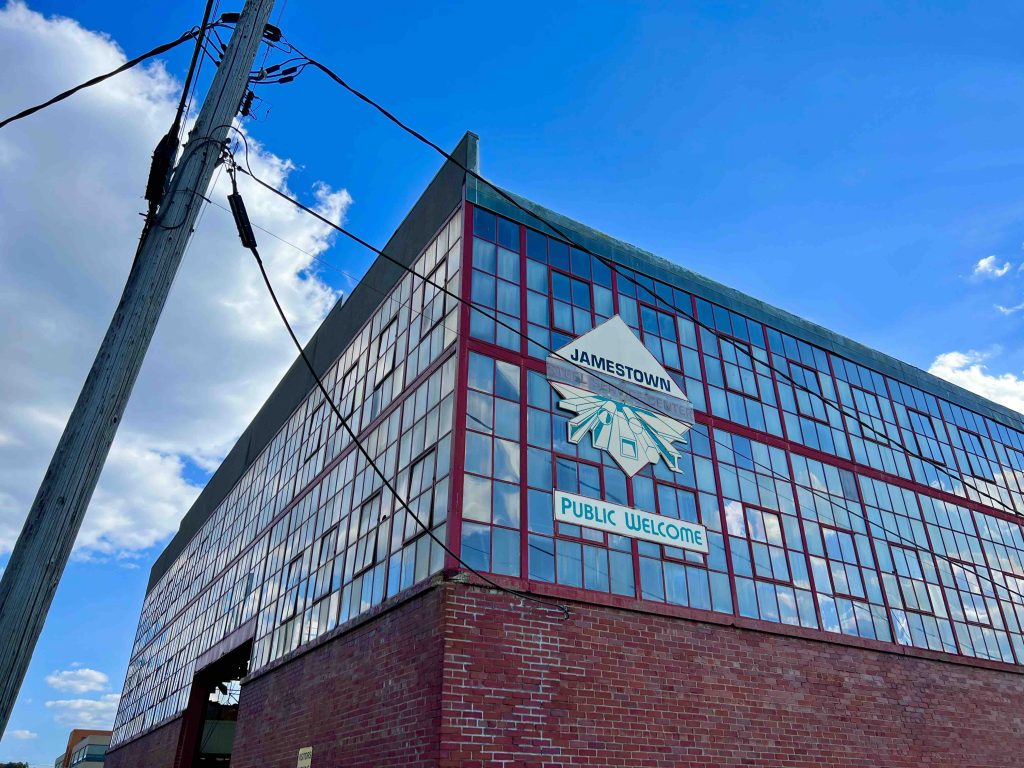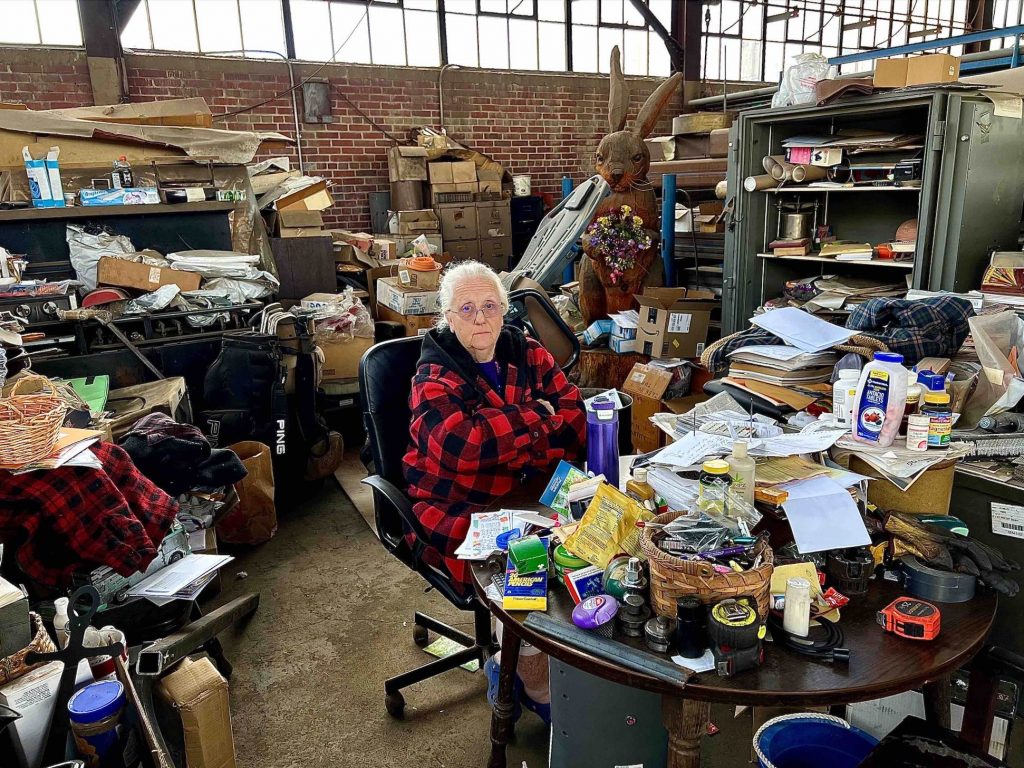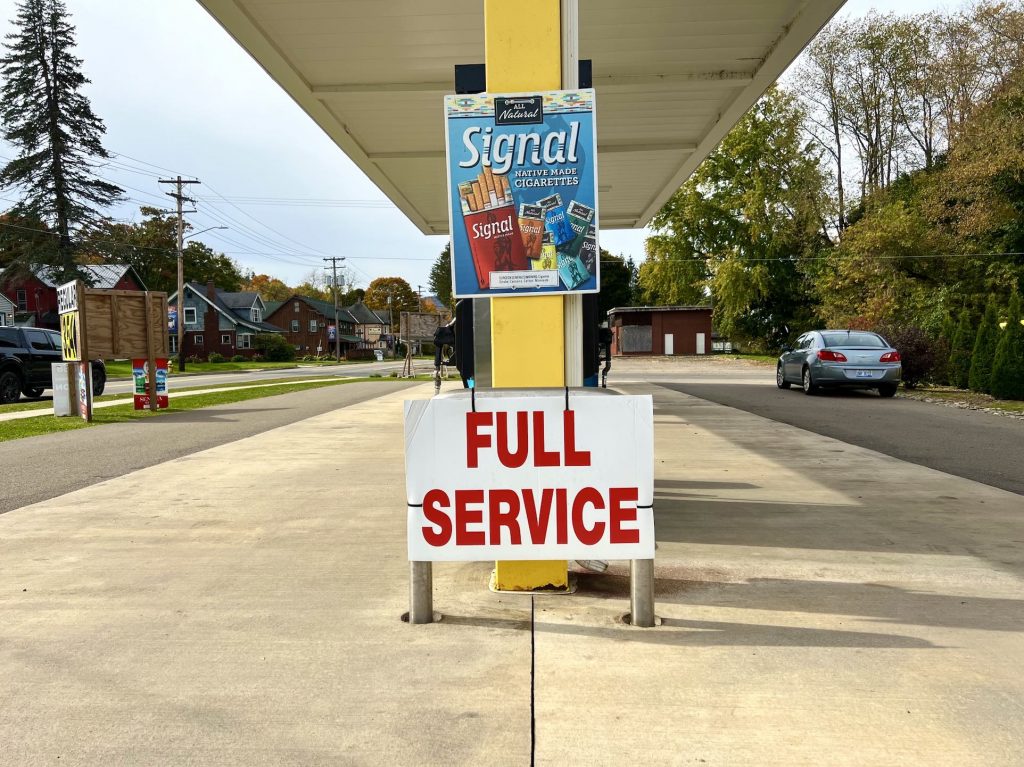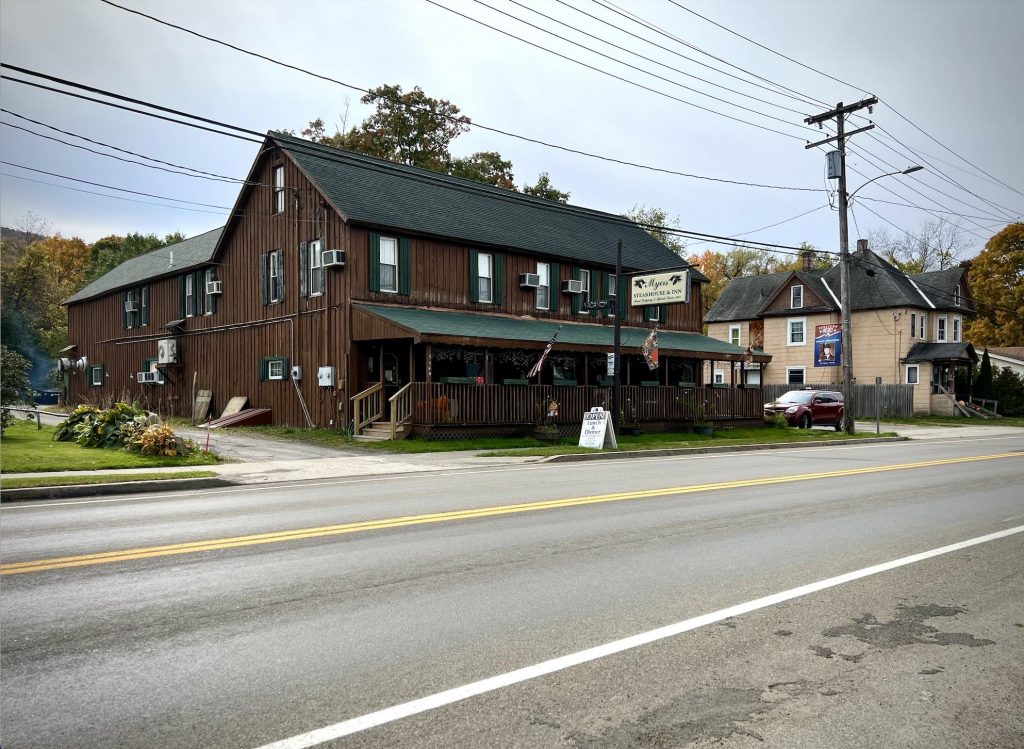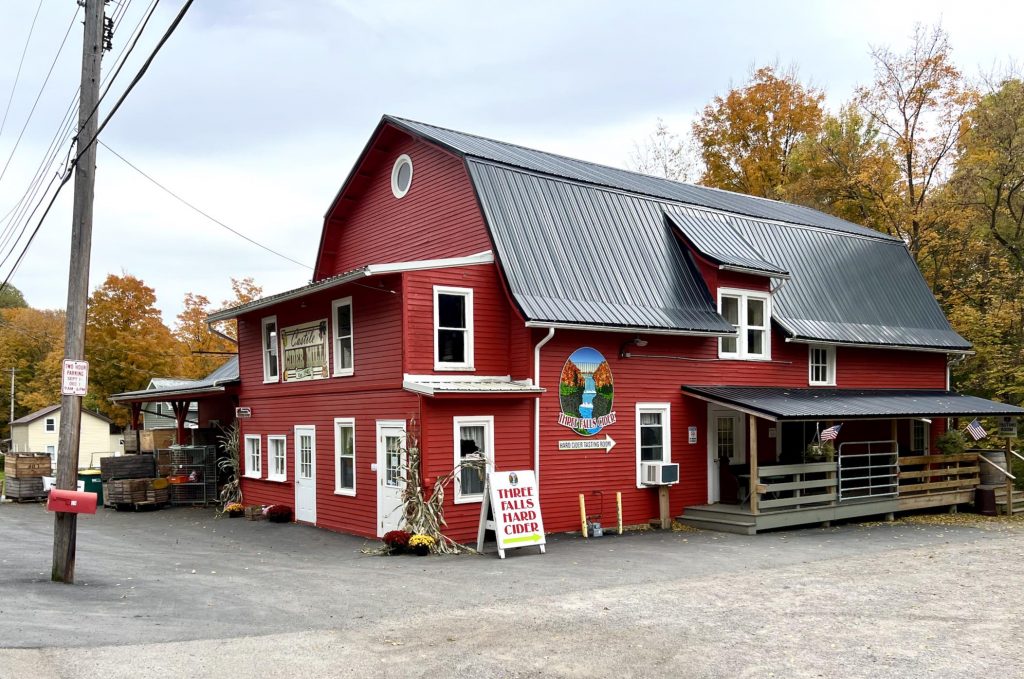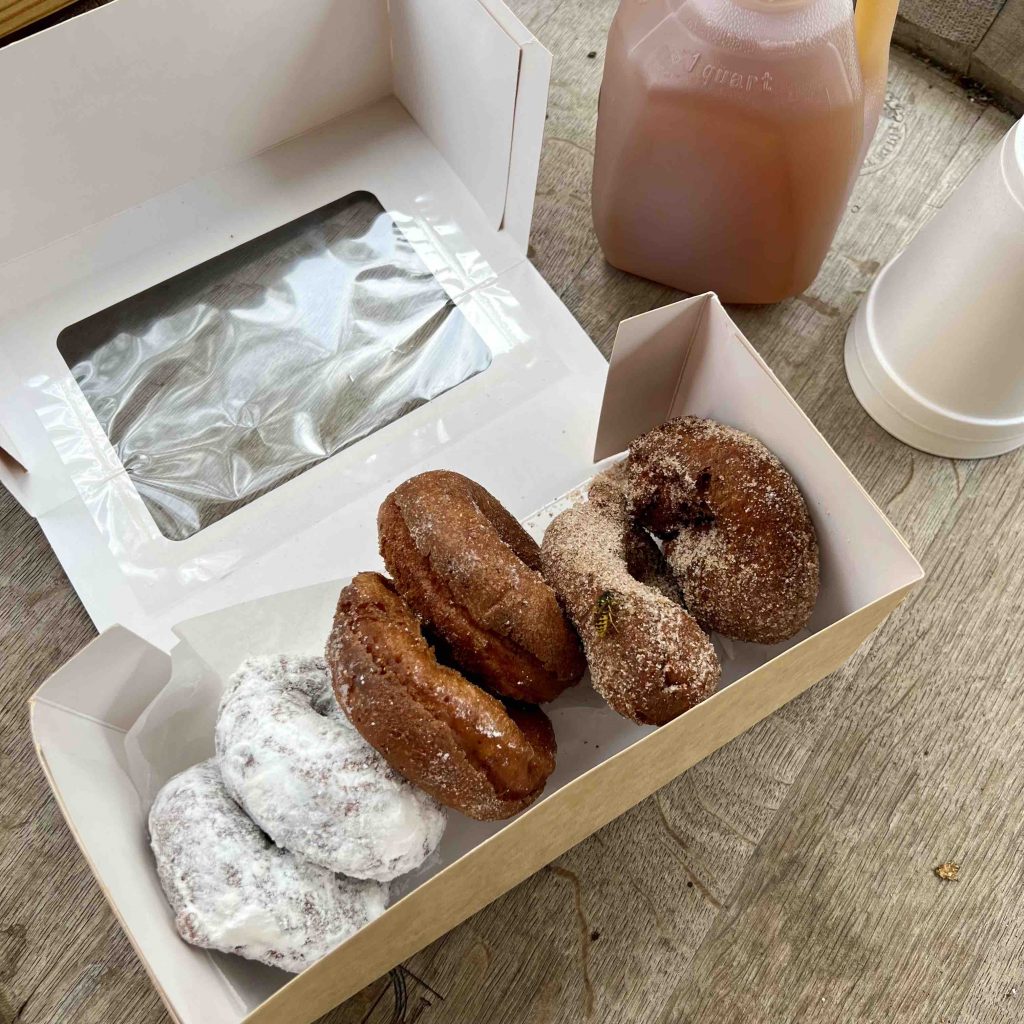Detroit to Toledo. Turn left. Cleveland. Accident, construction, delays. A dead deer on the freeway. Erie, Pennsylvania. Turn right. Chautauqua Lake, New York.
While there was actually many things I did not know about Western New York I managed to learn of a few of them on a five day driving tour through autumn leaves and low rocky bluffs extending from the furthest tip of Chautauqua County, through Cattaraugus, Allegheny, Wyoming, Livingston, and then north through Upstate New York, where the St. Lawrence River outlets into A Thousand Islands.
The first among my discoveries came over a rise on New York State Route 394 in the form of an unexpectedly grand view of a lake as we descended along the shoreline of what the indigenous people of the area called “place where fish are taken out”, or “two moccasins tied together” – both translations presented by experts on the lost language of the Erie.
Members of the Five Nations of Iroquois, the Erie Nation was destroyed in the mid 17th century for siding with the Huron during the Beaver Wars. As a lesson, the Iroquois burned Erie villages, leaving survivors to seek refuge with the Seneca. Apparently, the British and Dutch backed the Iroquois while the French supported the Huron. Regardless, all parties sought to control both the land and the fur trade.
While this may seem a long way to go for a sandwich that is exactly what I had after we checked into our room at the Chautauqua Harbor Hotel. The boys needed 15 minutes to bounce from one Queen size to the other while Nette prepared for dinner. I stood on our balcony overlooking the lake and caught a rather bright, large moon beginning its trek across the sky. No doubt the Erie had long ago done the same.
In the hotel restaurant, we discovered the Carousel Bar and outdoor heated pool were closed for the season. As a child, much of my travel came in the off-season so it wasn’t an issue. In fact, I like moving about without the crowds. And, the hotel has an indoor heated pool and hot tub so there wasn’t reason to complain.
- Balcony view of the moon over Chautauqua Lake
- Chautauqua Harbor Hotel | A Very Comfortable Room
Nette ordered the 20 oz Porterhouse – medium rare – with grilled asparagus and frites, and shared her dish with the boys. The Rachel, which had been on my mind since Kersti Bryan (Tales of the Walking Dead) placed the sandwich in her Top 3, came to table looking very much like a Turkey Reuben. Which, is fine. But, now I’m curious to discover when the Turkey Reuben became The Rachel. Nette says it might have something to do with the 90s TV show Friends, but I suspect it’s more Biblical.
Anyway, our meals were much better than expected. Very good, in fact. So often hotel food is average. But, this wasn’t the case here. And, the service was friendly and professional. After dinner, Nette and the boys played in the hot tub while I tended to work at from a the desk in our comfortable room. And, there were several options for lighting, which I find an important amenity.
Next Day
Chautauqua Lake feels familiar. Stretching 17 miles, it is often referred to by those who make such distinctions as the “Thumb of the Finger Lakes”. Dotted with small towns and art communities the lake seems a lovely escape for those in the region; a respite hidden in the wide open hills and forests just up the road from Jamestown, New York.
Technically, in the town of Celeron, Chautauqua Harbor Hotel is billed as a luxury accommodation. Built alongside the lake – on the property where the once grand Celoron Amusement Park operated between 1894 and 1962 – the hotel’s ambiance is very much like a mountain resort. Vintage photographs of Celeron Park line the corridors of the hotel linking the ghosts of amusements past to the current custodians of the land.
My boys were grazing at the hotel’s complimentary apple & cider bar (like seniors at Costco on free sample day) when the Concierge asked if I needed anything.
“Actually,” I said. “I wouldn’t mind learning a little more about the history of this place.”
“Coffee?” she asked.
“Yes, thank you,” I said. “Black.”
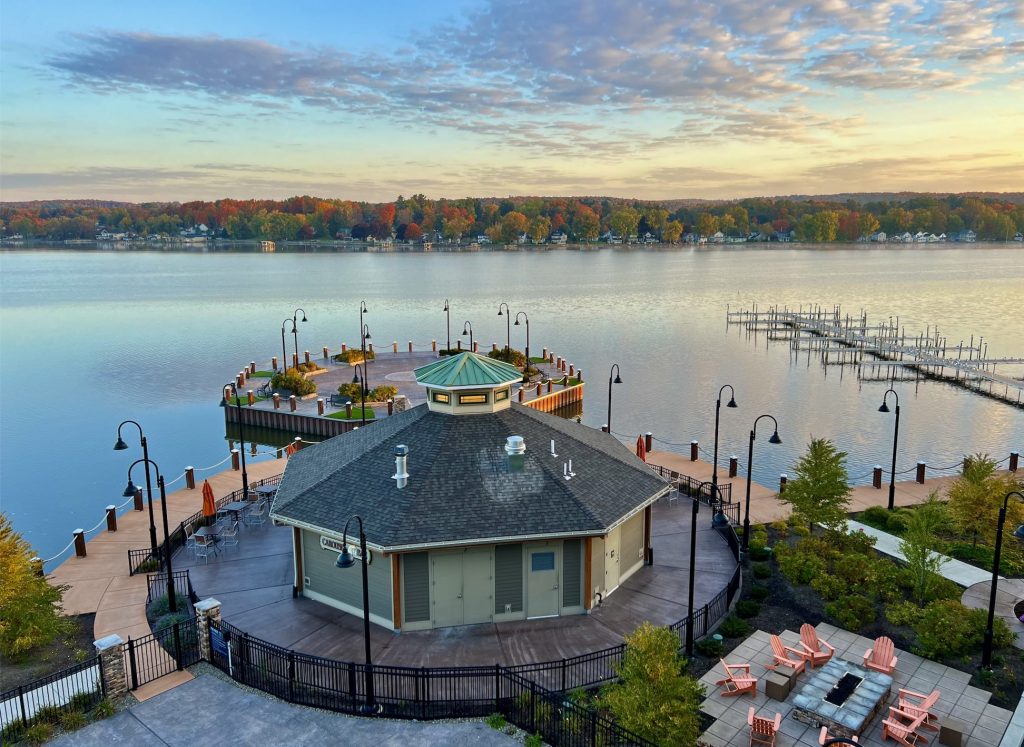
The Carousel Bar on Chautauqua Lake
Nette and the boys went ahead to breakfast while the concierge led me on a pleasant tour of the grounds; the closed-for-the-season Carousel Bar, the refurbished Pier, and the putting green. Then she pointed to a narrow in the lake just north of where we stood that is the place for which the Erie named Chautauqua.
“Locals say it means ‘Bag tied in the middle’,” she said. “Although, there is some debate over that.”
“Folklore, is a curious thing,” I replied.
She nodded.
At some point, the locals of Chautauqua built a small village where the bag ties in the middle and called it Bemus Point. Now, an artist and foodie community, the Concierge gave it strong recommendations. The locals may or may not have had say in erecting the bridge that carries the Southern Tier Expressway across the lake but there it is for all to traverse, making a drive around Chautauqua half as long should tourists be short on time.
Perhaps, it was the time of year but as I stood along the water I couldn’t help but notice a resemblance to Loch Ness, of the Scottish Highlands. Or, for that matter, Lake Champlain, which extends 107 miles from its southern tip in Lake George, New York to its northern most point in Montreal, Canada. Both locales shrouded in myth.
I asked the Concierge if there had been any sightings of a monster in Chautauqua Lake similar to those in Champlain or Loch Ness. Unfortunately, she was not able to confirm those sightings. When pressed to deny them, however, she was also not able to do so.
I’ll let you be the judge.
Back in the lobby the Concierge took me to a display advertising the National Comedy Center, located in Jamestown. It was then I learned Jamestown was the birthplace of American icon, Lucille Ball. Apparently, Lucy moved when she was a child to Celeron; her family home still standing just down the road from the hotel.
I was informed the locals did not have opposing views regarding the statue erected in Lucy’s honor in what is now Lucille Ball Memorial Park; a quaint parcel of land adjacent to the hotel containing the Celeron Lighthouse, a playground, and the Desi Arnas bandshell. It seems the original statue, designed by a well-known Jamestown artist, did not in the eyes of those who viewed the work depict a likeness befitting their favorite hometown girl.
- Lucy in the Park with Pigeons
- I Love Lucy’s childhood home
After much media attention, leading to several on-sight protests, it was determined by the authorities in charge of such matters that a NEW statue of Lucy be commissioned and placed in the park at a respectable distance from the original.
Henceforth, the original was officially to be described by all townsfolk referring to the object as “ugly”; while the new work – sculpted by Carolyn D. Palmer – was embraced, in the name of Arts & Sciences, and for the express purpose of better tourism, as the “lovely” statue of Lucy.
Of course, we had to see them for ourselves. And, while I will not offer an opinion on either work – out of respect for all stakeholders – I will say, that during the time we were there, a number of tour buses pulled into the lot and eventually allowed Lucy fans to exit and sit upon the park benches that were perfectly arranged to give unobstructed views of the newest version.
For the curious, a walkway leads to the original around the way.
This might also be a good time to announce that my five year old made his first public stage appearance – an intense piece of performance art wherein he portrayed a tornado wiping out a small town – in the Desi Arnas bandshell. Outside of our family, all three toddlers in attendance seemed to be enthralled – including the one watching in the midst of a diaper change.
Lucy’s childhood home is an easy walk from Chautaqua Harbor Hotel. It sits two blocks west from what might have been her elementary school and one block south of the train tracks. With the allure of an Amusement Park in proximity and the evening sounds of the train blowing through town it’s easy to imagine a young Lucy drawn to a life of entertainment.
Jamestown | The Pearl of New York
Take a hike along the River Walk, which for us began at McCrea Point Boat Landing. We caught a glimpse of the Chautauqua Bell while it was docked. Sadly, the steam powered vessel was finished giving tours for the day but it usually runs regularly from spring to the end of fall. A lovely Steamer, the Bell was dry docked for three years before a family bought the vessel and restored it to its original glory.
- 6th Street Bridge
- The Chautauqua Belle
A Revolutionary War marker also stands at McCrea Point: In early summer, 1782 a force of 250 Seneca led by Sayengaraghta and accompanied by a few British military passed through Chautauqua Lake to attack Hannastown, PA. I wondered how Sayengaraghta would have felt about the progress in the area as we crossed the refurbished 6th Street double arched bridge and made our way along the Chadakoin River.
Made known to us by our hotel Concierge the walk can easily fill an afternoon; with many vantage points, plenty of benches, parks, playgrounds, and bridges to navigate. Along the way we encountered bicyclists, joggers, families with strollers, and witnessed a few kayakers in the water. The boys ate apples and played a bit in Panzerlla Park before we crossed a quaint pedestrian bridge that led to Comedy Central Park.
Outside the National Comedy Center we imagined all of the legends that must be featured inside – Shecky Greene, Lenny Bruce, Joan Rivers, Dave Chapelle and, of course, Larry (of Three Stooges Fame). Rather than enter, however, we chose to honor these comedians by taking turns in telling our own funnies.
Our three year old went first: “Why did the poo poo cross the road?”
Things To do
It is clear that Jamestown is Lucy’s hometown, with the National Comedy Center, Lucy & Desi Museum, and the Lucille Ball Little Theatre all created in her honor. But, the community also supports the 500 seat Willow Bay Theater, the Spire Theater, and the $4.5M newly restored, 1923 Reg Lenna Center for the Arts. At the time of this writing, RLCA has strong film and film festival programs. And, then the James Prendergast Library, established 1891 and named for the founder of Jamestown, provides cozy reading areas and a variety of children’s programs.
Northwest Arena is home to concerts, hockey, skating, backyard curling, and something I had not seen; Ice Bumper Cars. Only $6 a ride! For local food and drink try The Pub, which has been in business over 50 years, serving hearty sandwiches, burgers, pizza and pasta dishes; all under $10. It should be noted there was a small but strong contingency of Buffalo Bills fans in the room. So, be aware. They seemed pretty serious about their team’s chances this year. A drink at the classic wooden bar runs about 5 bucks. Haggy’s Bar & Grill also serves burgers, fries, and other pub food but it was the warm pretzel sticks and cheese sauce that grabbed our boys attention.
- A Daily Newspaper | Founded 1826
- Lucy & Desi mural, Jamestown
Jamestown buildings reveal the town’s industrial past and work to represent how growing communities can incorporate their architectural treasures rather than replacing them with homogenized structures. The downtown area is a National Historic District, with over 100 buildings built between 1873 and 1956, with styles that range from Italianate, Gothic revival, to Art Deco. In fact, many downtown and neighborhood streets are still maintained with original or refurbished red brick.
While many locations caught our attention a few in particular will stay with us a long time. The Post Journal building, with its beautifully weathered exterior, is symbolic of local publications working against a changing media landscape. Serving its community since 1826, the daily covers southwestern New York, with a circulation of 10,000.
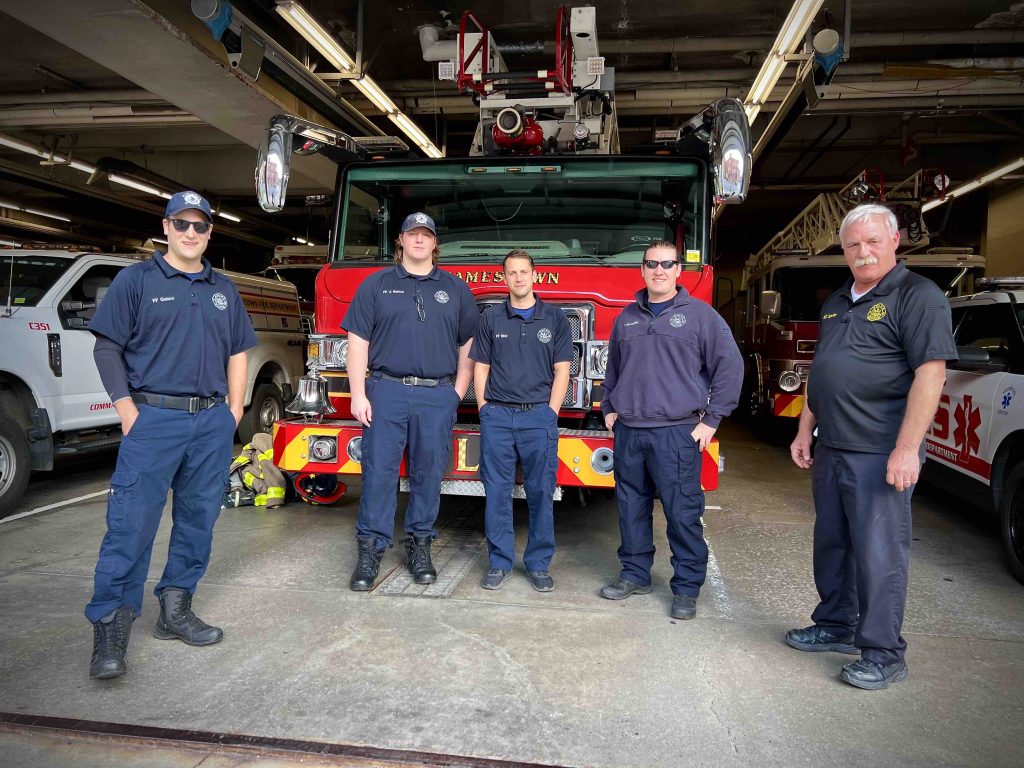
(left to right) FF Genco, FF J. Barlow, FF Bird, FF McLaughlin, Deputy Fire Chief Sigular
The Jamestown Professional Firefighters Local 137 – Ladder Company 1 – were good enough to share their time giving the boys a tour of the firetrucks. While the younger firefighters instructed the boys how to sound alarms and ring bells, Deputy fire chief, Roger Sigular spoke to me about the life of firefighters. Many come from a long line of men and women who have served the Jamestown community. Sigular brought me into the station to see a wall-mounted plaque entitled, The Last Alarm – a history of Jamestown firefighters memorialized by three dates; the day they became firefighters, the day they retired, and the day of their passing.
Roger Sigular’s dad, Robert is on The Last Alarm. As is Sigular’s great uncle, George who was on from 1928 to 1933. He was killed by a train. DFC Sigular finished by telling me that his son was also on duty as we spoke.
Finally, on the way back to the hotel, with sunlight beaming through its factory windows, Jamestown Boiler & Mfg. Company compelled me to pull over for photographs. As I hurried against the falling light a stoic, white haired woman, wearing red and black checkered overcoat, yelled at me from inside.
“Why are you taking pictures of my building?”
“Because,” I said. “It’s beautiful.”
“Oh,” she looked up at the light and nodded, “Yes, it is.”
Catherine Peterson has been in business in Jamestown since 1958. A family business, Jamestown Boiler operates as a steel warehouse, provides crane service, and repairs (you guessed it) boilers. The building seemed older than ’58 but I forgot to inquire, as she invited me inside. Filled with metals and machinery, overhead cranes and pipes, chains and ropes, all hung in controlled disorder. And, while these materials were cold and heavy there was comfort and warmth standing in their embrace.
I climbed the ironwork steps to the landing where Catherine sat surrounded by factory artifacts. We discussed several over the course of half an hour. Conversation moved from the properties of steel, to the changes Catherine has seen in Jamestown, to her thoughts on local and national politics. She’s seen some things; one of those whose story could fill a book.
- Jamestown Boiler, established 1958
- Owner, Catherine Peterson
Back at the hotel we made dinner out of a variety of dishes from the Lakehouse Tap & Grill – children’s burgers & fries, a Crab Cake sandwich, and a nicely prepared Filet with roasted fingerling potatoes. Again, much better than anticipated. Our compliments to the Chef, who delivered a perfect medium rare, with just the right amount of char on the exterior. And, again, the Service continued to be friendly throughout our stay.
On the patio, we sipped cider around the fire and told a few ghost stories. Back in our room the boys watched Disney while Nette enjoyed a long, hot shower. I logged on to the National Comedy Center’s website and went through a few videos. It was a very good day.
Next Day
Wake up, beautiful sunrise, complimentary coffee, 3o minutes in the gym, a grand breakfast all round (including a delicious blueberry stuffed French toast), then off into the great unknown.
For the drive, the boys requested Sparks’ Kimono My House. In fact, we had been listening to the album since Toledo. Naturally, what Nette and I considered the closest thing to record filler – Barbecutie and Lost & Found – became the boys favorite tracks. Soon, we all agreed, there is no “filler” on this record.
Using an old school map, Nette led us through a series of highways and back roads northeast toward Letchworth State Park that produced quite a visual experience. While the Fall Tour colors were underway this part of the world would be beautiful any time. But, it took a humble sign in Salamanca – a town named for a Spanish nobleman, politician, and businessman, with ties to Queen Isabela II and the Rothschilds, whose investments included the Atlantic and Great Western Railroads – that forced me to pull over.
- Full Serve at Wildwood Gas Mart
- Myers Steak House & Inn
It had been some time since I’d seen a FULL SERVICE sign. We pulled in and were greeted by an attendant who filled the tank and squeegeed bugs from the windshield. I got out of the car and we conversed throughout the process.
We were in Seneca Nation, established 1848. The attendant said he was Seneca – Onandowaga. Alleghany Territory, which extends from the Pennsylvania border upriver to Vandalia, New York was originally over 30,000 acres until 1964, when the Seneca lost 10,000 acres to the building of Kinzua Dam. Salamanca is within Allegheny Indian Reservation. Advertisements for Seneca tobacco caught my attention. And, while I am not a smoker – understanding all of the risks involved and truly disliking the practice – I picked up a pack of Seneca Warrior Natural Cigars; as the product is manufactured entirely in Seneca Nation.
Directly across the street from Wildwood Gas Mart is the over 100 year old Myers Steak House & Inn – formerly known as the “Wildwood House.” Sadly, we did not have time to dine inside this historical location but I’m addressing it here as a reminder to self (and others) that while “we can not see it all” one of the great rewards of roadtripping is to try as many things as possible – regretfully, this one got away.
- Castile Cider Mill
- Fry Cakes | Powdered, Apple Cider, Cinnamon
Donuts & Waterfalls
What did not escape us, however, was the Castile Cider Mill, established 1945. Located in the village of Castile – which, in 1821 was named after the historical region of Castile, Spain – the Mill is a Western New York historic landmark. Serving fresh apple cider and old fashioned fry cakes the drive is worth the trip, no matter where it begins.
We picked up cider, coffee, and a half dozen fry cakes including powdered sugar, apple cider, and cinnamon; as well as a couple Snap Dragon apples. We would have grabbed more but the hand-written sign in the window said, Cash or Check ONLY and for the life of us we could not find our checkbooks.
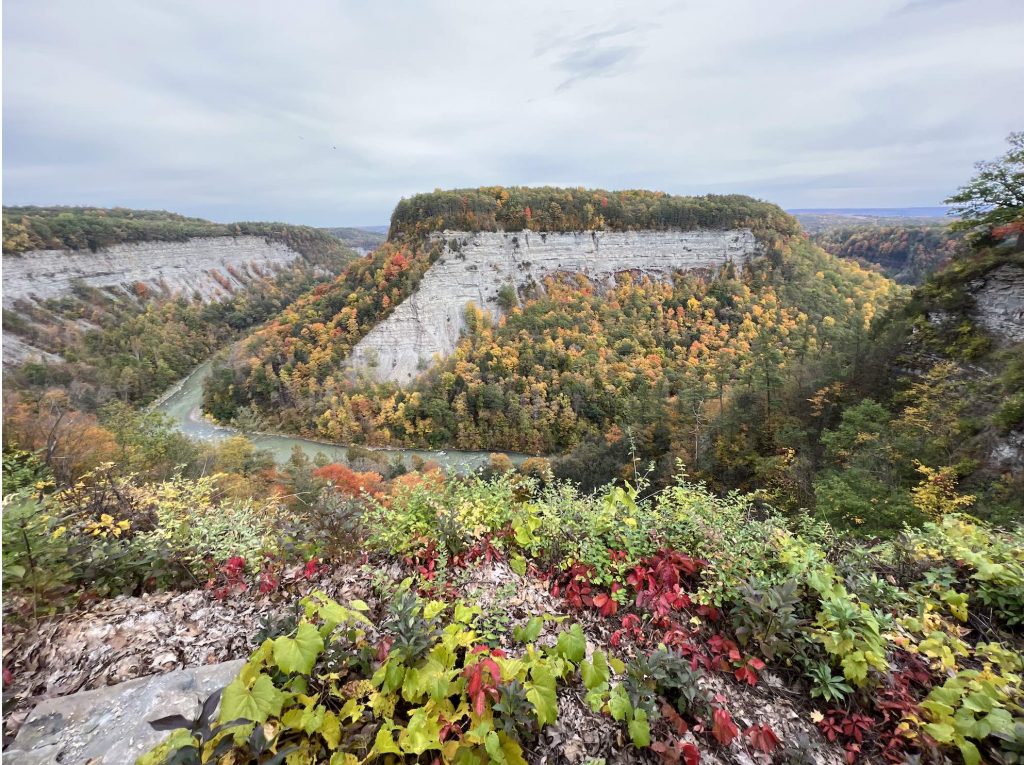
The Grand Canyon of the East
“Wow! That, is the biggest hole I have ever seen!” ~ my 5 year old
Coined the “Grand Canyon of the East”, Letchworth State Park is widely considered one of the most scenic locations in the eastern United States. Cliffs nearing 600 ft offer panoramic views of the Genesee River as it roars over waterfalls and through the gorge. We broke out our fry cakes and cider, setting them along a stone wall, and enjoyed one of those rare moments in life when everything seems good in the world.
Letchworth is a vast area filled with forests, 66 miles of hiking trails, with upper, middle, and lower falls. Legend says, the Seneca believed the middle falls so wondrous that it made the sun stop at midday. The territory was in fact part of Seneca homeland until they were forced out after siding with the Red Coats during the American Revolution. Buffalo industrialist, William Letchworth purchased the land near the middle falls in 1859 and began work on Glen Iris Estate, which now operates as a hotel. The William Pryor Letchworth Museum provides plenty of information and artifacts for those interested in learning more about the history of the land.
The gorge is made of Devonian shales, limestone, and sandstone. Hemlocks are found throughout the park and there is an abundance of wildlife. Open year round for hiking, biking, and whitewater rafting, the park is also renown for deer and turkey hunting, as well as its nature centers and bird conservation. In winter, Letchworth is open to snowmobilers, cross country skiers, snow tubing, and other winter sport.
We visited a playground, had a proper picnic, discovered a pay phone, and walked a few miles of trail that eventually led to Genesse Arch Bridge; which, replaced the old Portage Bridge in 2018 and is the featured image at the top of this story.
My wife went off shooting pictures while my boys laughed and played amongst the trees. I reached into my pocket, pulled out the pack of Warrior Cigars and fired one up. It was good. Nice aroma. Made moreso that it was Seneca tobacco smoked on Seneca land. In fact, I don’t think it’s stretching to say, I felt brave, strong, and an unwavering commitment to persist through adversity, just as the package described.
Walking toward the river I drew a hit and let my mind imagine what life was like for the Seneca …
“There’s NOO SMO-KING in the PAARK!” came the yell of a woman’s voice.
A few birds ruffled in the wind. I stared out over the rushing water and watched as freshly fallen leaves floated downstream.
“ExcUSE MEE!” her voice a bit shrill this time.
I spit in my palm a carefully extinguished the cigar.
“Thank You!”
From here we’d head northeast to where the St. Lawrence River begins in the Thousand Islands region. I’d never been, but was intrigued as a child to learn that in 1701 it was part of a circular route beginning in Montreal that led to Antoine de la Mothe Cadillac’s founding of Detroit.
We had reservations at the aptly named 1,000 Islands Harbor Hotel, Clayton NY. If we left within the hour we should arrive for an early dinner.
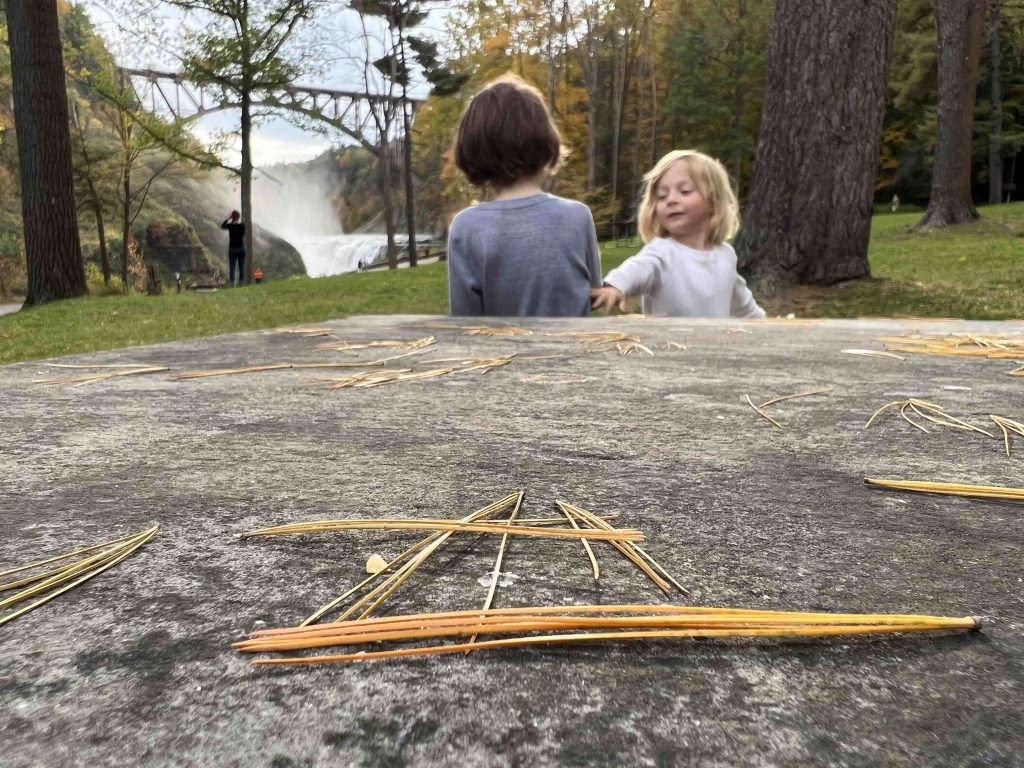
The Boys and the Genesee Arch Bridge
Note to smokers: In July, 2022 New York Governor Kathy Hochul signed legislation banning smoking in public parks and beaches.

